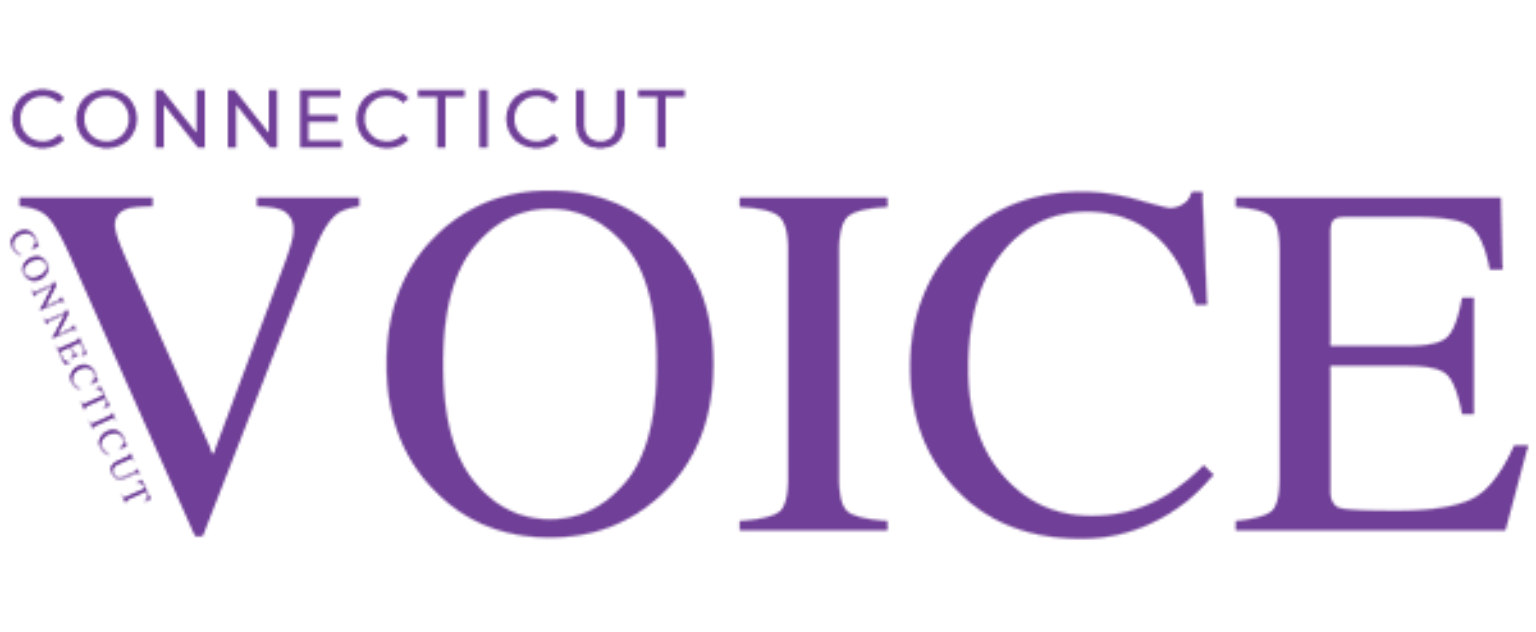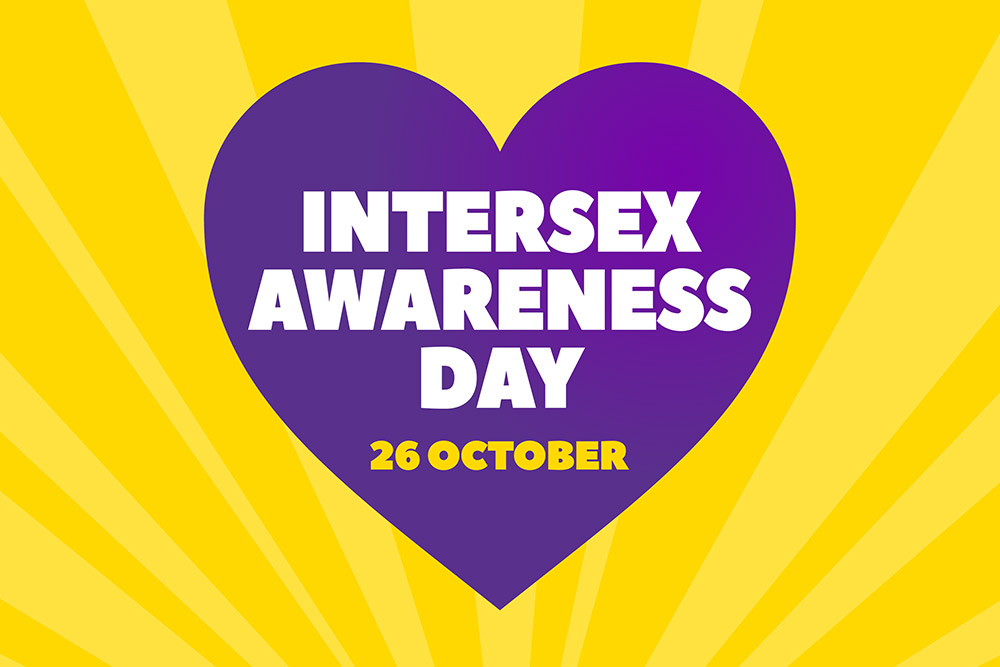Intersex individuals seek greater visibility and understanding
By Jane Latus
LGBTQIA+. In social movements, employment, journalism, education, and society at large, this acronym has become a familiar and widely accepted acknowledgment that our identities matter. While most of the letters have been widely recognized for years, those who identify as “I” are advocating for increased visibility.
“Intersex” is a general term used for a variety of conditions in which a person is born with a reproductive or sexual anatomy that doesn’t seem to fit the typical definitions of biological sex, which we typically think of as “female” or “male.” Some of these characteristics are visible at birth and some are not apparent until a child reaches puberty.
“When a lot of people find out they’re intersex, they end up in a bubble of silence, with no one to reach out to. It’s very isolating and stigmatizing,” says Sarah Kosheff, a 30-year-old intersex person from Bridgeport.
Some intersex people would rather not be in the acronym at all, saying it amplifies misunderstanding of what it means to be intersex – in particular, mistakenly conflating being intersex with being transgender.
However, one can be both intersex and LGBTQ, and even those who aren’t LGBTQ say they share the stigma and discrimination aimed at the queer community. Also, like others in the acronym, there is no “one” way of being intersex. In fact, there are 30-plus variations, some with their own spectra.
“Our society is becoming more accepting of the non-binary. Just as there is no binary for gender, there also is no binary for biological sex. Everyone has different genitalia,” says Ellie Kraus, 22, a West Hartford resident who is intersex. “Most people aren’t aware that intersex even exists. While it’s not common, intersex is also not rare and occurs in as many as 1.7% of the population.”
Intersex people say they are misunderstood because it’s a subject that’s historically been hushed, and still isn’t up for much discussion. They have hardly any cultural representation. And unfortunately, there’s some attention they’d rather not have; many dislike a widely read novel with an intersex protagonist: Pulitzer-winner “Middlesex” by Jeffrey Eugenides. Hans Lindahl, an intersex writer, explains some of the harms the book caused the intersex community in a You Tube video, “An intersex person reacts to Middlesex.”
What intersex people say they want others to know about them is – essentially – more. They want parents discovering their newborn is intersex to have ready access to accurate information and support. They want parents and doctors to not rush to surgical intervention. They want autonomy over their own medical decisions. They want to be understood and helped to make their own choices.
Bonnie Scranton, a licensed clinical social worker, agrees. In her role as a family support therapist with the GUPPE Clinic at Connecticut Children’s Medical Center, she works to take care of the emotional needs of families and children with intersex traits. Since 2006, when a broad Consensus Statement identified multi-disciplinary care as a best practice in the field, psychosocial support has been seen as integral.
“Because intersex conditions are so medically complex, these teams are essential to provide the best care,” she says. Rather than have children attend multiple appointments with providers who are either unfamiliar with or disconnected from other specialties, the CCMC program sees children and families together at the same time.
“So I will meet with a family, alongside of endocrinology, urology, gynecology, and genetics, depending on what the child needs,” adds Scranton. “Having us all in the same room is not only more efficient for the families but helps ensure that any questions a family has are answered in a well-rounded way. The child’s right to an open future is critical.”
“I’d like people to know we’re here, and we don’t need medical intervention to regulate how we look,” says Kraus. “The medical community has a history of ‘normalizing’ bodies through irreversible and often non-consensual surgeries, and that needs to change.”
She also hopes for an end to the stigma. Historically, she says, the attitude was, “‘This isn’t normal, so we don’t want to talk about it.’ I want to talk about it as much as I can.”
Scranton echoes this sentiment, sharing that the work she does with families is largely around acceptance, education, and helping parents to explain their child’s condition to them in developmentally appropriate ways. “Having a conversation with a teenager who is just learning about the specifics of their condition is very different than gradually sharing age appropriate details with a child from birth, but both are very important,” she says.
Research shows that parental adjustment correlates to a child’s self-acceptance, so Scranton feels it is essential to start there. In the past, some doctors never shared a child’s diagnosis with the parents. In cases where they were told, parents were encouraged to keep their child’s diagnosis a secret, for fear of negative mental health effects.
“We know now that secrecy breeds shame,” she says. “I try to help families see the distinction between privacy and secrecy. One is about healthy boundaries and the other is about shame. While there are some aspects of our development that some children and families wish to keep private, intersex bodies are not shameful.”
Many ways to be intersex
Because the term intersex encompasses a wide variety of bodily variations, resulting in genitalia and sex organs that are outside of traditional expectations, and because these impact bodies differently, not all people claim “intersex” as an identity.
As an inkling of its complexity, not all who have the most common intersex condition – Congenital Adrenal Hyperplasia (CAH) – even consider themselves intersex. Some forms of CAH make the body unable to produce cortisol, resulting in a truly life-threatening condition requiring lifelong medication. Also, with CAH, the adrenal glands produce excess androgens. (The so-called “male” hormones, like testosterone). These hormonal anomalies can cause differences in the appearance of the genitals at birth.
There are spectrums of CAH, ranging from newborns born with a vulva and clitoris, to those who have a vulva and naturally large clitoris that may resemble a small penis, to those who develop facial hair, deep voices, and genital changes at puberty due to higher testosterone.
Another intersex variation is Androgen Insensitivity Syndrome (AIS), which also varies on a spectrum from partial (PAIS) to complete (CAIS) inability to process androgen hormones. People with AIS have XY chromosomes but because the receptor sites on the developing genitalia and organs do not respond to androgens, they are born with some or most of the physical traits of a typical XX female – for example, a vulva and average-sized clitoris – with internal testes.
Kosheff’s parents found out she has AIS when she was born, but she didn’t know until age 11, when her parents thought she was old enough to understand. Prenatal testing had her parents expecting a boy. “But I was born a girl,” she says.
Her parents told her the surgery she’d had at age 10, which they’d previously described as removing “excess tissue,” was a precautionary removal of undescended testes. “I learned I’d never have a period, and never be able to have children,” she says. “It was a lot to process. I began thinking I was inferior, that I was somehow less of a girl.”
At 16, Kosheff went to an AIS conference with her mother. “That was the turning point, when I really started to take pride in it,” she says. “I finally felt less alone. It was really a life changer.”
Kraus has CAIS – but she and her parents didn’t know it until she was 14. She was born with typical female genitalia, but a combination of factors, beginning with a hernia at age 2, made her mother wonder if her child was developing typically. The surgeons just repaired the hernia and sewed her back up. When Kraus hadn’t had her period and had few signs of entering puberty, her nurse practitioner ordered an ultrasound.
Kraus’s mother says, “They saw she had no uterus. And that was certainly not news that we were expecting.” A further test showed her daughter has XY chromosomes.
“When I found out, it was definitely shocking to me,” says Kraus. “Even at 14, you’re thinking about what your life might look like as an adult, and about having a family. For a while, I was in denial about my diagnosis. What helped me to accept it was meeting other people like me.”
Kraus learned about a national support group, called InterConnect (formerly the AIS-DSD support group), where she could gather every summer with other children, teens, and adults to meet, talk, learn, and share their experiences.
While the surgeon clearly missed the signs of CAIS back in 1999, Kraus now feels lucky.
“I know people who’ve had surgery when they were too young to consent. They wish they could have grown into their bodies.” She also knows people whose surgery left them with genitalia that doesn’t correspond to their gender. “It’s changing and improving quickly. There are less children who’ve had that surgery,” she adds.
Legislating intersex surgery is complicated and controversial even within the intersex community and is currently under consideration in Connecticut (see sidebar on following page).
Lifelines
Kraus’s mother says that when her daughter was diagnosed with an inguinal hernia at age 2, “I asked the surgeon, ‘Isn’t this the route the testes take?’ He said, ‘Oh no, she has ovaries and will give you lots of grandchildren.’”
Eight years after learning her daughter had internal testes rather than ovaries, and no uterus, she says, “we have talked about how there are many ways to have a family,” but adds, “I can’t pretend it’s not going to be sad for her.”
For parents, meanwhile, “at first, beyond understanding the medical complexities and being sure that your child has the best care possible, the most difficult part is that it’s very lonely.” Support is crucial, she says, adding that the InterConnect/AIS-DSD support group “became a complete lifeline for us. We have made lifelong friends and have found a lot of meaning in being there for other families like ours.”
Kraus and her mother now both volunteer with the group.
“We get calls all the time. Most parents are afraid, confused, and worried about what the diagnosis will mean for their child’s future. As a parent, you worry about how your child will be treated, how their relationships will evolve, and about how they will feel about themselves. There is no substitute for peer support in fostering the self-esteem and connection that we all need to develop in a healthy way,” she says.
“The bottom line is that it helps to know there are people who have walked this path before you and will continue to do so. Many doctors have told us that we will probably never meet another person like us, which is just not true. We want to break the silence and stigma and celebrate our kids.”
There are precious few cultural examples of intersex people. One is Belgian model Hanne Gaby Odiele, who proclaimed her intersex status in a 2017 Teen Vogue article.
Kosheff says, “I’m a big television fan and I’ve seen some representations of intersex people that have been alarming, and some that have been beautiful.” She cites MTV’s “Faking It” and an episode of “Freaks and Geeks” as positive examples. “I’d like to see more representation, more intersex voices and awareness in general. The intersex community has been very silent, very invisible for such a long time.”









More Stories
How Can They Keep from Singing?
“My anger problems became a success” – Artist Diane DiMassa on the Collection of her Classic Underground Comic
Connecticut Sun: Playing for Good